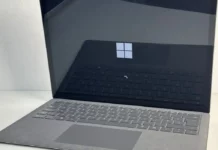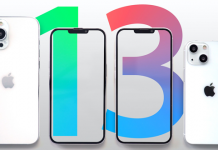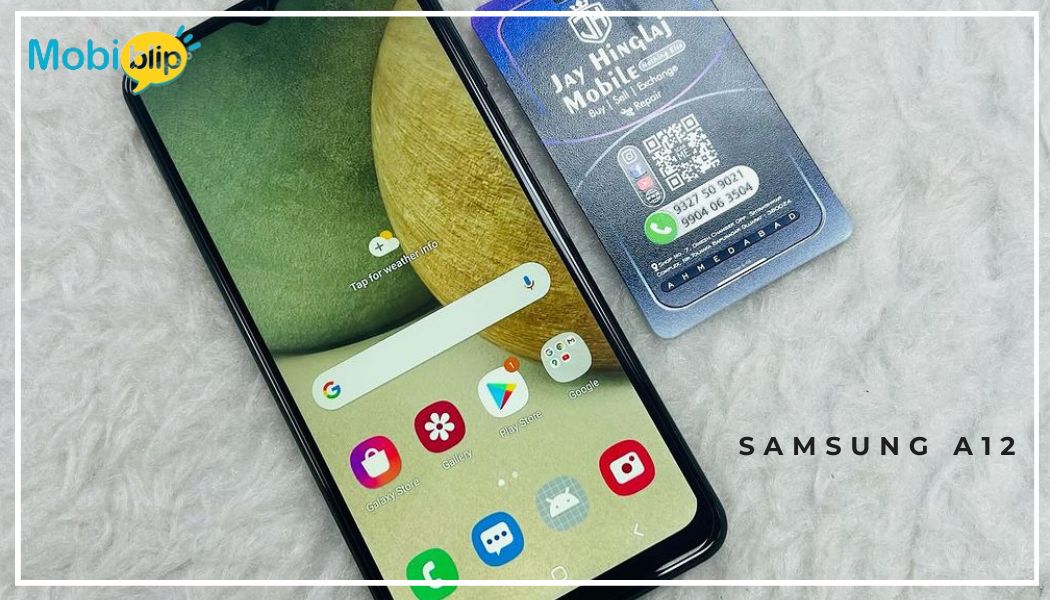Exploring Samsung A12: Features & Performance
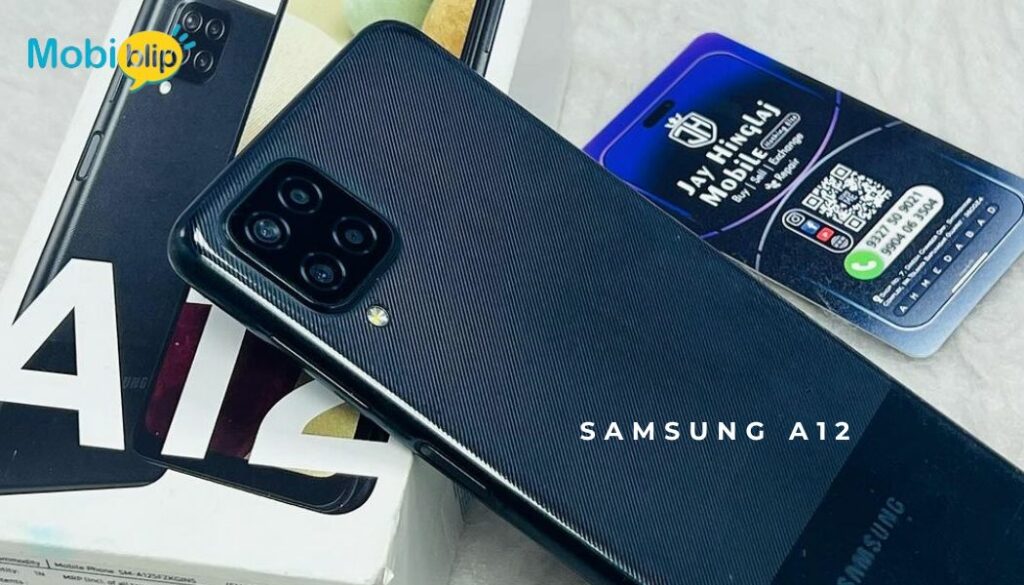
Remember flip phones? Yeah, those relics of the past. The smartphone market has exploded with options for every need and budget. But for many, finding a phone that’s both affordable and capable can be a challenge. Enter the Samsung Galaxy A12, a budget-friendly smartphone that promises decent performance without breaking the bank.
But is it all sunshine and rainbows? Can this phone truly compete in a world dominated by high-end flagships, or is it destined to be another forgotten footnote in the ever-evolving smartphone landscape? Buckle up, tech enthusiasts, as we dive deep into the A12, exploring its strengths, weaknesses, and whether it deserves a spot in your pocket.
Samsung Galaxy A12: A Closer Look
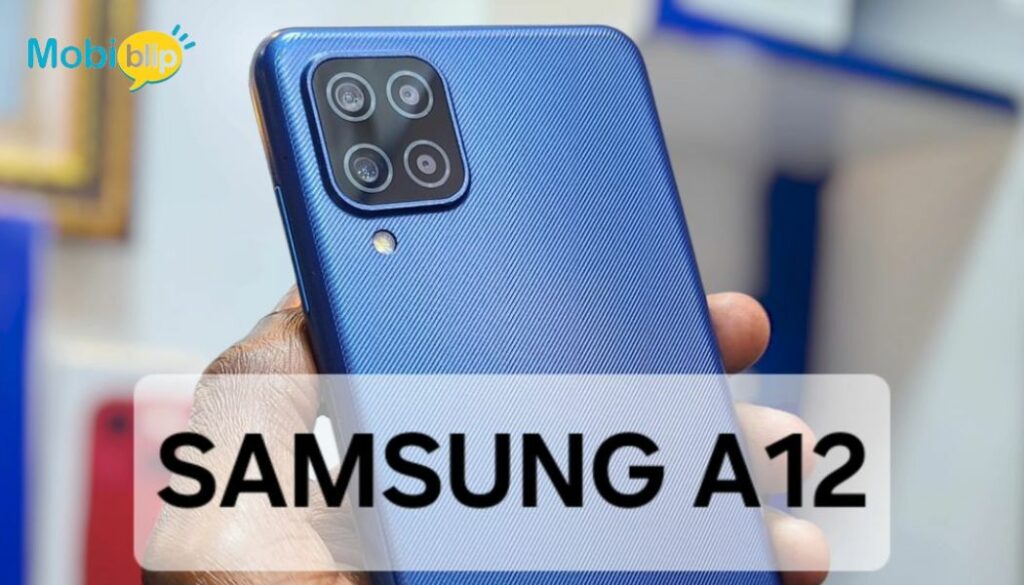
The Galaxy A12 sits comfortably within Samsung’s Galaxy A series, known for offering a blend of affordability and functionality. This phone caters to users seeking a reliable daily driver without the hefty price tag associated with high-end models. Now, let’s unpack its key features:
- Large Display: Immerse yourself in a spacious 6.5-inch HD+ display, perfect for browsing, watching videos, and gaming.
- Quad Camera System: Capture life’s moments with a 48MP main sensor supported by additional lenses for macro, ultrawide, and depth effects.
- Solid Performance: The octa-core processor paired with up to 4GB of RAM tackles everyday tasks smoothly.
- Long-lasting Battery: The 5,000mAh battery promises to keep you powered through the day, minimizing the need for frequent charging.
- While it might not boast the top-of-the-line specs of its flagship counterparts, the A12 aims to deliver a well-rounded experience for budget-conscious users.
Samsung Galaxy A12’s Design and Build



While the Galaxy A12 might not win any awards for groundbreaking design, it offers a clean and functional aesthetic. The phone comes in two color options: black and white, both featuring a textured plastic back. While plastic construction is typical for budget phones, the A12’s textured finish adds a touch of visual interest and helps resist fingerprints.
However, it’s important to acknowledge that plastic construction does raise concerns about durability compared to phones with metal or glass bodies. The phone might feel slightly less premium in hand, and it’s susceptible to scratches and scuffs if not protected with a case.
Despite the material choice, reviewers generally agree that the A12 holds a surprising level of sturdiness. The unibody design contributes to a solid and well-assembled feel, and the buttons offer decent tactility. The 6.5-inch display provides a good viewing experience, but keep in mind its HD+ resolution might not be as sharp as higher-end models.
Here’s a quick summary of the A12’s design and build:
- Simple and clean aesthetics
- Textured plastic back adds grip and resists fingerprints
- Plastic construction raises durability concerns
- Solid and well-assembled feel
- Large display with HD+ resolution
Ultimately, the design and build quality of the A12 reflect its budget-friendly nature. While it might not be the most glamorous phone on the market, it offers a practical and functional experience for everyday use.
Samsung Galaxy A12’s Display


The Galaxy A12 boasts a large 6.5-inch PLS TFT LCD display with a resolution of 1600 x 720 pixels (HD+). While the size is impressive, offering ample screen real estate for entertainment and daily tasks, the HD+ resolution might leave you wanting more. Text and images won’t appear as sharp as on phones with higher resolutions, especially when viewed up close.
In terms of color accuracy, the A12 performs averages. While it doesn’t boast the vivid and rich colors of some AMOLED displays found in higher-end models, it generally produces acceptable color reproduction for everyday use.
Brightness is another area where the A12 delivers a mixed bag. While it can reach a maximum brightness of around 400 nits under manual adjustment, it lacks an ambient light sensor for automatic adjustment. This means you might encounter some challenges using the phone in bright outdoor conditions, requiring manual adjustments to optimize visibility. However, some reviewers noted that enabling adaptive brightness through the front camera sensor can offer a slight improvement in outdoor usability.
Viewing angles are another consideration. Due to the LCD technology, the A12’s display exhibits some color shifting and contrast loss when viewed from extreme angles. This isn’t necessarily a deal-breaker for everyday use, but it’s worth keeping in mind if you frequently share your phone’s screen with others.
When compared to other smartphones in its price range, the A12’s display falls somewhere in the middle ground. Some competitors might offer slightly higher resolutions or brighter displays, while others might offer similar specifications. Ultimately, the choice depends on your individual priorities and whether the display’s limitations are acceptable considering the phone’s overall value proposition.
Here’s a quick summary of the A12’s display:
- Large 6.5-inch size
- HD+ resolution (1600 x 720 pixels)
- Average color accuracy
- Maximum brightness of around 400 nits (may struggle outdoors)
- Limited viewing angles due to LCD technology
Remember, the display is just one aspect of the phone, and its limitations might be outweighed by its strengths in other areas, depending on your needs and priorities.
Samsung Galaxy A12’s Performance


The Galaxy A12 packs a MediaTek Helio P35 octa-core processor, paired with up to 4GB of RAM. This combination falls into the entry-level category when compared to flagship processors. While it won’t win any speed races, it’s crucial to understand how it handles day-to-day tasks for the typical user.
For everyday tasks like browsing, social media, and light gaming, the A12 should perform adequately. However, don’t expect lightning-fast performance. App launches might not be instantaneous, and multitasking between demanding apps could lead to some occasional stutters and slowdowns.
Here are some key points to consider:
- Smooth performance for basic tasks: Browsing, social media, and light gaming should run smoothly.
- Multitasking limitations: Running multiple demanding apps simultaneously might cause occasional lag.
- Benchmark scores: The A12 scores around 109,789 on AnTuTu and 171 single-core/998 multi-core on Geekbench. These scores place it in the entry-level category compared to high-end processors.
- It’s important to understand that benchmark scores are not the sole indicators of real-world performance.
Compared to other smartphones in its price range, the A12’s performance is generally comparable. While some competitors might offer slightly better processors, the overall experience for basic tasks should be similar.
Ultimately, the A12’s performance capabilities should be weighed against your individual needs. If you’re a casual user who primarily focuses on basic tasks and light gaming, you might find it sufficient. However, if you demand top-tier performance for demanding applications or heavy multitasking, you might need to consider other options.
Samsung Galaxy A12’s Camera System



The Samsung Galaxy A12 boasts a quad-camera system on the rear, offering a variety of options for capturing your special moments:
- 48MP Main Sensor: This sensor shoulders the main responsibility for capturing photos and videos. While megapixel count isn’t everything, it generally indicates the sensor’s ability to capture detail.
- 5MP Ultrawide Sensor: This sensor allows you to capture expansive landscapes and group photos by fitting more elements into the frame.
- 2MP Macro Sensor: This sensor is designed for extreme close-up shots, allowing you to capture intricate details of small objects.
- 2MP Depth Sensor: This sensor primarily assists in creating portrait mode photos with a blurred background effect (bokeh).
Image quality:
- Well-lit conditions: In bright and natural lighting, the A12’s main sensor can capture decent photos with acceptable detail and color reproduction. However, don’t expect the same level of sharpness and dynamic range as higher-end phones.
- Low-light conditions: As with most budget phones, the A12 struggles in low-light situations. Photos become noticeably noisier, and details can become obscured.
- Ultrawide and Macro sensors: These secondary sensors offer decent results for casual use, but they are lower in resolution and may not produce the same level of quality as the main sensor.
Additional features and modes:
- LED flash: The A12 comes with an LED flash to assist with low-light photography, but its effectiveness is limited.
- Shooting modes: The camera app offers various shooting modes like portrait, panorama, and night mode. These modes can be helpful in specific situations, but they might not always produce significantly better results compared to the standard photo mode.
- Video recording: The A12 can record videos at up to 1080p resolution at 30fps. However, video quality is average, and stabilization is limited.
Overall, the A12’s camera system is a fair representation of what you can expect from a budget-friendly phone. It can capture decent photos in good lighting conditions, but low-light performance and the limitations of the secondary sensors are areas to consider. If you’re a casual user who prioritizes social media sharing and capturing occasional snapshots, the A12’s camera might suffice. However, if you’re a mobile photography enthusiast or require exceptional camera quality, you’ll likely need to look elsewhere.
Samsung Galaxy A12’s Battery Life
One of the key selling points of the Galaxy A12 is its large 5,000mAh battery. This capacity is relatively generous for a budget phone and promises impressive endurance for everyday users.
Real-world usage scenarios:
- Light to moderate users: With light to moderate use involving browsing, social media, and occasional calls, you can easily expect a full day or even two on a single charge.
- Heavy users: For users who engage in extensive gaming, video streaming, or intensive multitasking, the phone might require charging closer to the end of the day.
Screen-on time:
Reviews report varying screen-on time figures depending on usage patterns. However, it’s safe to say that achieving 7-8 hours of screen-on time is quite realistic with moderate to heavy use.
Important to remember:
- Battery life can vary depending on individual usage patterns, signal strength, and screen brightness settings.
- The phone only supports standard 15W wired charging, which is not the fastest compared to some competitors. However, the large battery capacity partially compensates for the slower charging speed.
Overall, the A12’s battery life is one of its strongest assets. It caters well to users who prioritize long-lasting battery life without frequent charging interruptions. If you’re a heavy user, you might need to top up the battery more frequently, but the large capacity provides ample buffer compared to other budget phones. The standard charging speed might not be the fastest, but the overall battery life is a significant advantage for the A12 in its price range.
Samsung Galaxy A12’s Software and User Experience



The Galaxy A12 runs on Samsung’s One UI, currently based on Android 11. While it might not boast the latest iteration of Android, One UI offers a clean and user-friendly interface with various customization options.
User Experience:
- Navigation: Navigating the phone is generally straightforward, thanks to One UI’s intuitive layout and gestures.
- Pre-installed apps: The A12 comes with a fair amount of pre-installed apps, including some from Samsung and third-party providers. While some of these apps might be useful, others might be considered bloatware that you might not need. Fortunately, many of these pre-installed apps can be uninstalled or disabled to free up storage space and streamline the user experience.
- Notable features: One UI offers some notable features like dark mode, edge panels for quick access to apps and tools, and a built-in game launcher for optimizing performance during gaming. However, it’s important to note that some of the more advanced features found in higher-end Samsung phones might be missing on the A12.
Overall, the A12’s software and user experience offer a decent foundation for daily use. One UI is generally user-friendly, and the presence of some bloatware is somewhat typical of budget phones. While it might not be the most feature-rich experience compared to high-end models, it should be sufficient for most casual users.
It’s important to be aware that future software updates might not be guaranteed for the A12:
Samsung typically provides software updates for its devices for a limited timeframe, especially for budget models.
While the A12 runs on Android 11, receiving future major Android updates like Android 12 or 13 might be unlikely.
This is a crucial factor to consider, especially if long-term software support is important to you.
Connectivity and Additional Features


Connectivity:
While the Galaxy A12 doesn’t support the latest 5G technology, it offers the essential connectivity options for everyday use:
- 4G LTE: This provides access to cellular data networks for browsing, streaming, and downloads.
- Wi-Fi: Connect to wireless networks for internet access at home, work, or public hotspots.
- Bluetooth 5.0: Connect to wireless headphones, speakers, and other compatible devices.
Additional features:
Expandable storage: The A12 comes with limited internal storage, but you can expand it further using a microSD card, allowing you to store more photos, videos, and apps.
Fingerprint sensor: Located on the rear of the phone, the fingerprint sensor provides a secure and convenient way to unlock your device.
Other features: The A12 also includes GPS, FM radio, and a headphone jack, catering to users who still prefer wired connections.
Overall, the A12 offers a decent selection of connectivity options and additional features, considering its budget-friendly price tag. While it might not boast the latest advancements, it covers the essential functionalities for staying connected and managing your daily needs.
Value for Money
The Samsung Galaxy A12 sits in a competitive segment of the smartphone market, where budget-conscious users seek a balance between affordability and functionality. So, is this phone worth your money? It depends on your priorities and expectations.
Here’s a breakdown of its pros and cons to help you decide:
Pros:
- Affordable price tag: The A12 is a relatively inexpensive option compared to high-end models, making it accessible to a wider range of users.
- Large, 6.5-inch display: Great for browsing, watching videos, and gaming.
- Long-lasting battery life: The 5,000mAh battery can easily last a full day or even two on a single charge for moderate users.
- Decent camera system: While not the best, the A12’s quad-camera setup offers basic photo and video capabilities for casual users.
- Expandable storage: MicroSD card slot allows you to expand storage space for photos, videos, and apps.
- Fingerprint sensor: Provides a secure and convenient way to unlock your device.
Cons:
- Plastic build quality: Might feel less premium and is susceptible to scratches compared to phones with metal or glass bodies.
- HD+ display resolution: Text and images might not appear as sharp as phones with higher resolutions.
- Average camera performance: Struggles in low-light conditions, and the secondary sensors have limitations.
- Standard 15W charging: Not the fastest compared to some competitors.
- Limited software updates: Future major Android updates might be unlikely.
When compared to competitors in the same price range, the A12 holds its own. Some competitors might offer slightly better processors, higher resolution displays, or faster charging, while others might offer similar specifications.
Ultimately, the decision of whether the A12 is a good value for money comes down to your individual needs and priorities. If you prioritize affordability, long battery life, and a large display, and are willing to accept its limitations in terms of camera, build quality, and potential software updates, then the A12 might be a good choice for you. However, if you prioritize top-tier performance, the best camera experience, or the latest software support, you might need to consider other options within a slightly higher price range.
Pros and Cons
| Feature | Pros | Cons |
| Price | Affordable | |
| Display | Large 6.5-inch size | HD+ resolution (not the sharpest) |
| Battery Life | Long-lasting (up to 1-2 days for moderate users) | |
| Camera | Decent (for casual users) | Average performance struggles in low-light, limitations of secondary sensors |
| Storage | Expandable (microSD card slot) | Limited internal storage |
| Fingerprint Sensor | Convenient and secure unlocking | |
| Build Quality | Plastic body | Less premium feel, susceptible to scratches |
| Charging | Standard 15W | Not the fastest |
| Software Updates | Runs Android 11 | Limited updates unlikely to receive major Android versions |
In Crux
The Samsung Galaxy A12 presents itself as a budget-friendly option in the smartphone market, offering a large display, long-lasting battery life, and a decent camera system for casual users. However, it’s crucial to remember its limitations, including a plastic build, average camera performance in low-light, and potentially limited software updates.
Ultimately, it depends on your priorities and budget. If you’re searching for an affordable phone that prioritizes longevity on a single charge and a spacious display for everyday use, the A12 might be a suitable choice. However, if you demand top-tier performance, cutting-edge cameras, or guaranteed long-term software support, you might need to explore options within a slightly higher price range.
What are your thoughts on the Samsung Galaxy A12? Share your opinions or experiences in the comments below!
How much did you like our detailed Samsung A12 Review: Unveiling Features & Performance? Also, please share these Blogs with your friends on social media.
Related Blogs


